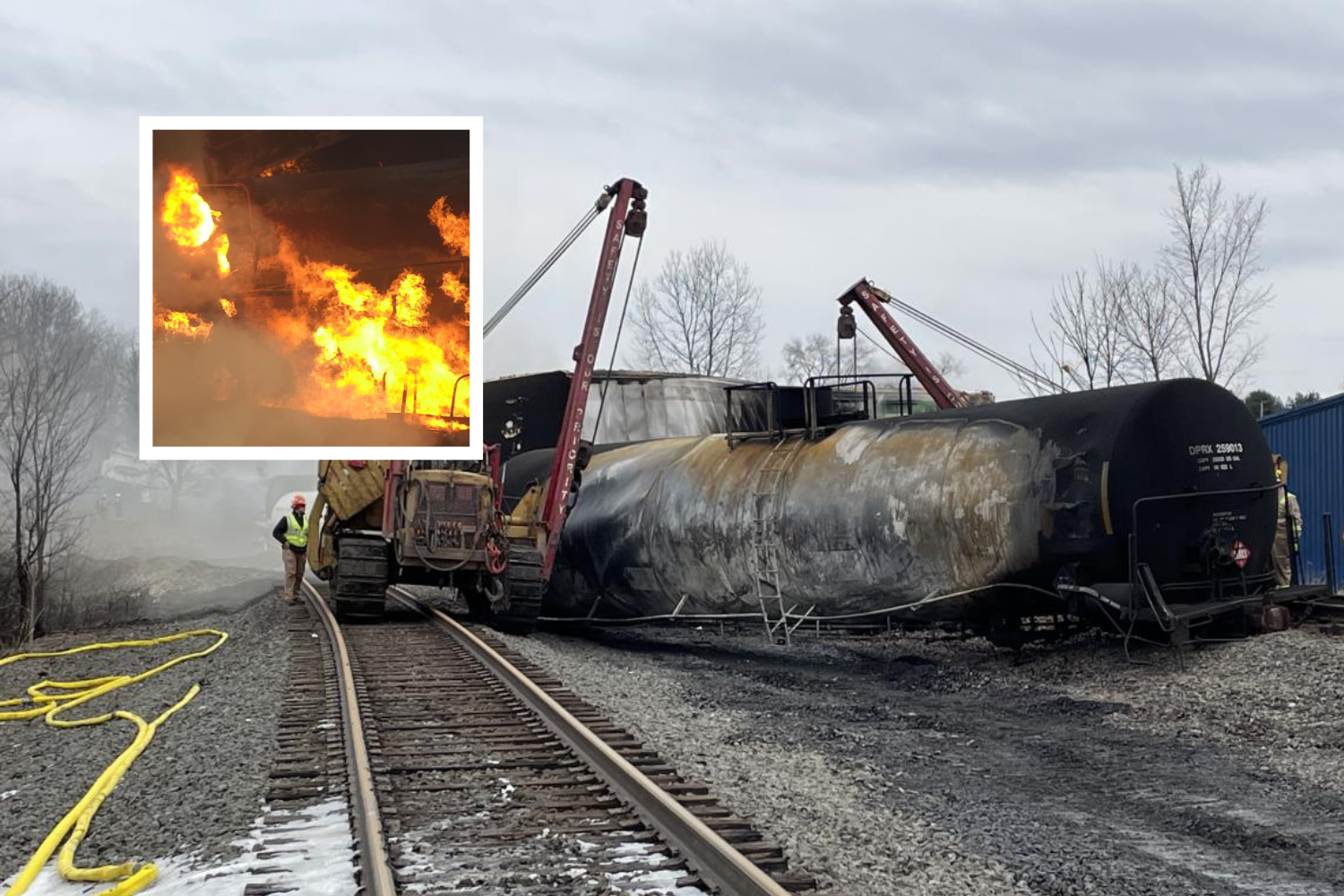Ohio Train Derailment: Toxic Chemical Lingering In Buildings For Months

Table of Contents
The Persistence of Vinyl Chloride and Other Toxins
Understanding Vinyl Chloride's Properties
Vinyl chloride, a colorless, flammable gas used in the production of PVC plastics, is a known carcinogen. Its volatility means it can easily evaporate into the air, but it also has the potential to persist in the environment, particularly in soil and porous building materials. Exposure to vinyl chloride can lead to a range of serious health problems, including liver cancer, brain cancer, and various respiratory issues. The long-term effects of low-level exposure remain a significant concern.
- Toxicity and Health Impacts: Vinyl chloride is classified as a human carcinogen by numerous international health organizations. Exposure can cause liver damage, central nervous system disorders, and increased risk of various cancers.
- Other Released Chemicals: The derailment also released other hazardous materials beyond vinyl chloride, including butyl acrylate, ethylhexyl acrylate, and ethylene glycol monobutyl ether. The long-term effects of these chemicals, individually and in combination, are still being investigated.
- Scientific Concerns: Numerous scientific studies and expert opinions highlight the potential for long-term contamination from vinyl chloride and other released toxins. The persistence of these chemicals in the environment necessitates ongoing monitoring and remediation efforts.
Impact on Residential Buildings and Infrastructure
Contamination Pathways
Vinyl chloride and other toxins released during the derailment likely infiltrated buildings through various pathways:
-
Air Infiltration: The initial release created a large plume of contaminated air that could have entered homes and other structures through ventilation systems and gaps in building materials.
-
Soil Contamination: Contaminated soil can leach toxins into building foundations and groundwater, potentially leading to indoor air and water contamination.
-
Water Contamination: The released chemicals could have contaminated local water sources, posing a risk to those using well water or even municipal water supplies potentially affected by groundwater infiltration.
-
Affected Buildings: Reports indicate that numerous residential and commercial buildings in the vicinity of the derailment site have shown evidence of contamination, with varying levels of vinyl chloride detected in different locations. Specific data on affected buildings is still emerging as testing continues.
-
Cleanup Efforts: While cleanup efforts have been undertaken, including soil removal and air purification, the effectiveness of these measures in addressing long-term contamination in buildings remains a subject of ongoing debate and concern. The challenge lies in the difficulty of removing persistent toxins from porous building materials like wood and concrete.
Long-Term Health Concerns for Residents
Assessing Health Risks
The lingering presence of toxic chemicals in buildings poses significant long-term health risks to East Palestine residents.
- Reported Health Concerns: Residents have reported a range of symptoms, including headaches, respiratory issues, skin irritations, and other ailments potentially linked to exposure to the released chemicals.
- Ongoing Monitoring and Assessments: Health assessments and ongoing monitoring are crucial to determine the extent of the health impacts and to provide appropriate medical care to those affected. Long-term epidemiological studies are needed to fully understand the long-term health consequences.
- Resources for Residents: The need for accessible and comprehensive healthcare and information resources for affected residents cannot be overstated. Information on accessing medical support and resources is essential for addressing the concerns of those in East Palestine.
Government Response and Environmental Remediation
Cleanup Efforts and Accountability
The government response to the Ohio train derailment and its long-term implications has faced significant scrutiny.
- Adequacy of Cleanup: The effectiveness of the initial cleanup procedures in mitigating long-term contamination remains a matter of ongoing debate among experts and residents. A thorough, independent assessment of the cleanup process is crucial for accountability and future prevention.
- Regulatory Challenges: Addressing the complex legal and regulatory challenges associated with environmental contamination of this scale requires coordinated action across various governmental agencies and levels. Clear lines of responsibility and accountability must be established.
- Ongoing Investigations: Independent investigations are essential to determine the causes of the derailment, assess the full extent of the environmental damage, and hold those responsible accountable. Transparency and public access to information are paramount.
Conclusion:
The long-term implications of the Ohio train derailment, specifically the persistence of toxic chemicals like vinyl chloride in buildings, demand sustained attention and action. The ongoing health concerns for residents, the challenges of effective remediation, and the need for accountability underscore the severity of the situation. Stay informed about the ongoing situation, support affected communities, and demand comprehensive remediation efforts to mitigate the ongoing risks posed by this devastating event and prevent similar tragedies in the future. Continued vigilance and advocacy are crucial to ensure that the victims receive the support they need and that lessons learned lead to improved safety regulations and environmental protection measures.

Featured Posts
-
 Ftc Appeals Microsoft Activision Merger Ruling
Apr 22, 2025
Ftc Appeals Microsoft Activision Merger Ruling
Apr 22, 2025 -
 Following The Karen Read Murder Trials A Year By Year Account
Apr 22, 2025
Following The Karen Read Murder Trials A Year By Year Account
Apr 22, 2025 -
 Open Ai Facing Ftc Investigation Concerns Regarding Chat Gpt And Ai Development
Apr 22, 2025
Open Ai Facing Ftc Investigation Concerns Regarding Chat Gpt And Ai Development
Apr 22, 2025 -
 New Signal Chat Exposes Hegseth Amidst Pentagon Chaos Allegations
Apr 22, 2025
New Signal Chat Exposes Hegseth Amidst Pentagon Chaos Allegations
Apr 22, 2025 -
 Nordic Defense Cooperation Examining The Integration Of Swedish And Finnish Forces
Apr 22, 2025
Nordic Defense Cooperation Examining The Integration Of Swedish And Finnish Forces
Apr 22, 2025
